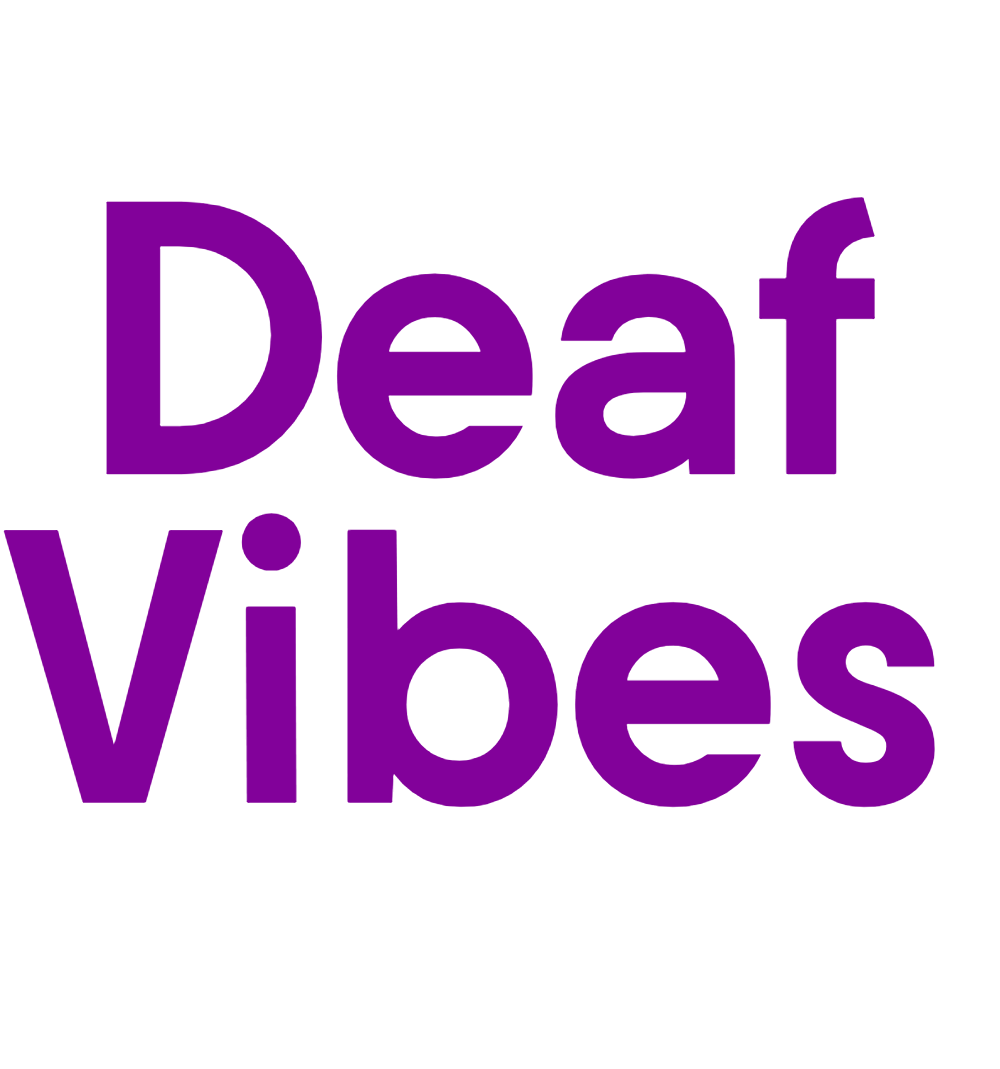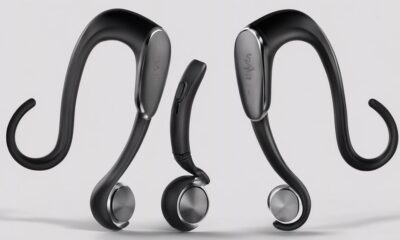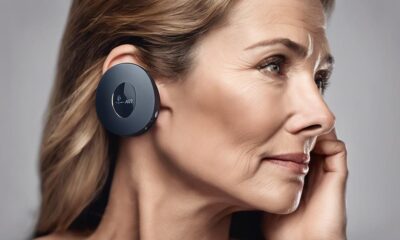Living with Hearing Loss
How to Choose a Smoke Detector for the Deaf
Kickstart your journey to finding the perfect smoke detector for the deaf with essential insights and guidance.
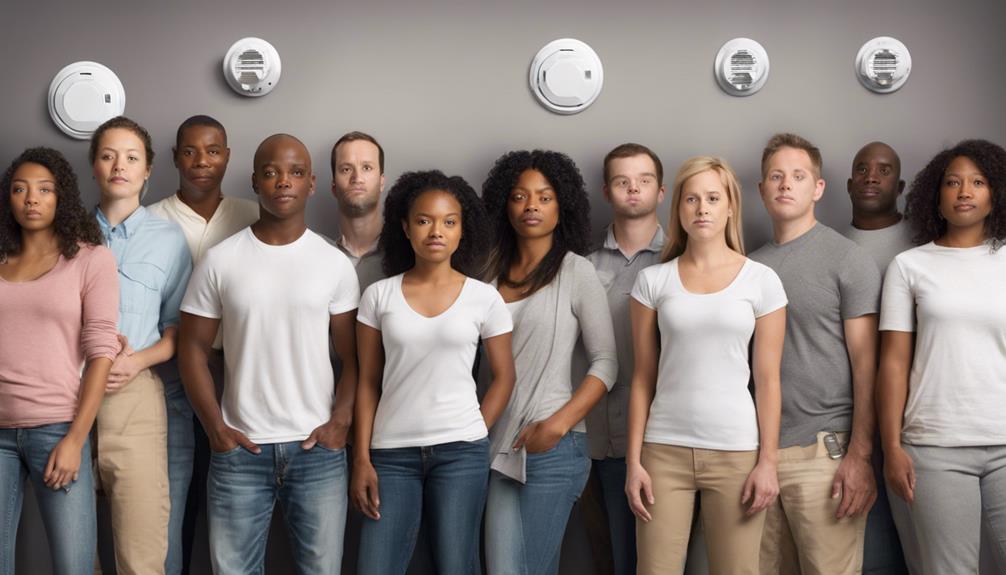
When choosing a smoke alarm for individuals who are deaf, it can feel daunting due to the many options on the market. However, do not worry, as we will make this important decision easier by highlighting essential features and factors that are crucial for keeping people with hearing impairments safe.
By understanding the unique requirements and functionalities of deaf-friendly smoke detectors, you can make a well-informed choice to safeguard against potential emergencies effectively.
Key Takeaways
- Opt for smoke detectors with high-intensity strobe lights for visual alerts.
- Choose interconnected alarms for comprehensive coverage in different areas.
- Prioritize detectors with photoelectric and carbon monoxide sensors for dual protection.
- Select ADA and UL STD 1971 compliant detectors with LED strobe lights for effective alertness.
Importance of Smoke Detectors for Deaf
Ensuring the safety of deaf individuals in the event of a fire necessitates the installation of specialized smoke detectors equipped with visual alert features. Standard smoke detectors that rely on auditory alarms may not effectively alert individuals with hearing impairments. Alarms with strobe lights are recommended for the deaf to provide visual cues in case of a fire emergency. Specifically, high-intensity strobe lights in alarms, especially in sleeping areas, are crucial to waking individuals who mightn't hear traditional alarm sounds.
It is essential to choose smoke detectors that meet ADA requirements and UL Standards for the deaf community. These detectors are designed to comply with regulations that ensure accessibility and safety for individuals with disabilities. By incorporating visual alert features such as strobe lights, smoke detectors can effectively notify deaf individuals of potential fire hazards, enabling them to respond promptly and evacuate safely. When selecting a smoke detector for the deaf, prioritizing models that cater to their specific needs is paramount for overall safety and peace of mind.
Types of Deaf-Friendly Smoke Detectors
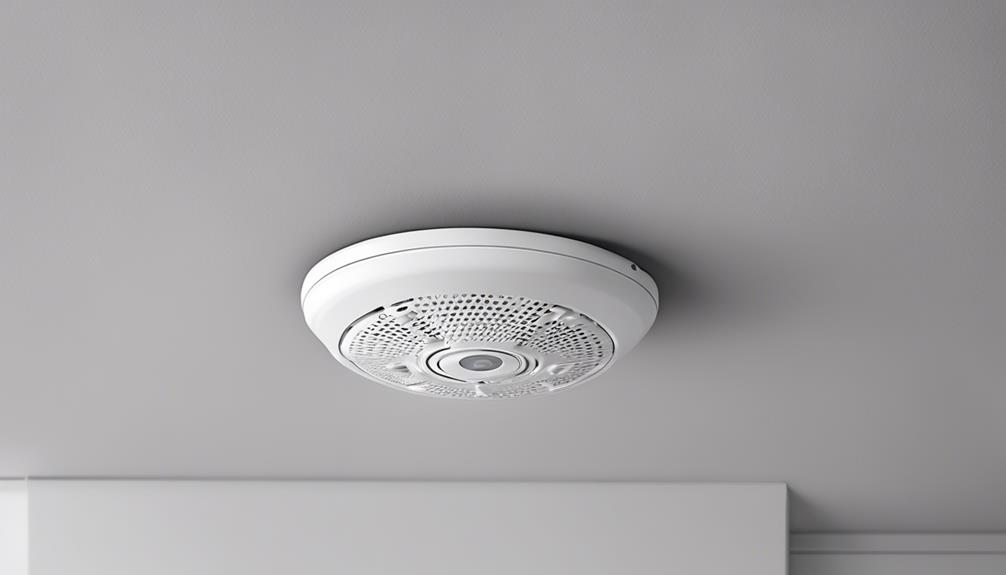
Visual alert systems, such as strobe light alarms, offer deaf individuals a clear warning through flashing lights.
Vibrating alarm options, like bed or pillow shakers, provide a physical stimulus to wake up those with profound hearing loss.
Combining these features can create a comprehensive alert system tailored to the specific needs of individuals who are deaf or hard of hearing.
Visual Alert Systems
Incorporating high-intensity strobe lights and LED displays into smoke detectors enhances alert effectiveness for individuals with hearing loss. Strobe lights, emitting powerful flashing lights, and LED displays, providing visual alerts for smoke and fire detection, are key components of deaf-friendly smoke detectors.
These visual alert systems play a crucial role in ensuring timely responses to emergencies by offering customizable visual alerts tailored to different preferences and needs. By utilizing advanced technology like strobe lights and LED displays, these smoke detectors offer innovative solutions for individuals with hearing loss, improving overall safety and peace of mind.
Choosing a smoke detector with visual alert systems is essential for creating a secure environment that caters to the specific requirements of those with hearing impairments.
Vibrating Alarm Options
Highlighting another critical feature of deaf-friendly smoke detectors, vibrating alarm options cater specifically to individuals with hearing loss by providing a reliable alert system designed to wake them during emergencies.
These alarms use vibrations to ensure individuals are promptly notified of smoke or fire dangers, making them essential safety devices for the deaf or hard-of-hearing. Ideal for deep sleepers and those with profound hearing loss, vibrating alarms offer an effective way to enhance safety in homes.
Some models can even be interconnected with other safety devices to create a comprehensive alert system. By incorporating vibrating alarm options into their homes, individuals with hearing loss can rest assured that they'll be alerted in case of emergency situations, improving overall safety and peace of mind.
Considerations for Smoke Detector Selection
When selecting a smoke detector for the deaf, it's crucial to consider various factors to ensure optimal safety and protection.
- Opt for smoke detectors with high-intensity strobe lights, as recommended by ADA and UL Standards, to provide visual alerts for individuals with hearing impairments.
- Look for interconnected alarms to establish a personalized home safety system that offers comprehensive coverage throughout your living space.
- Choose smoke detectors equipped with both photoelectric sensors for smoke detection and carbon monoxide sensors to provide dual protection against different types of hazards.
- Ensure the smoke detector undergoes testing by independent laboratories to meet the stringent requirements of ADA and UL STD 1971 standards, guaranteeing reliability and performance.
- Select smoke detectors featuring LED strobe lights, particularly beneficial in sleeping areas, to ensure effective alertness through visual notifications.
Considering these factors will help you make an informed decision when choosing a smoke detector tailored to the needs of the deaf community.
Key Features to Look For
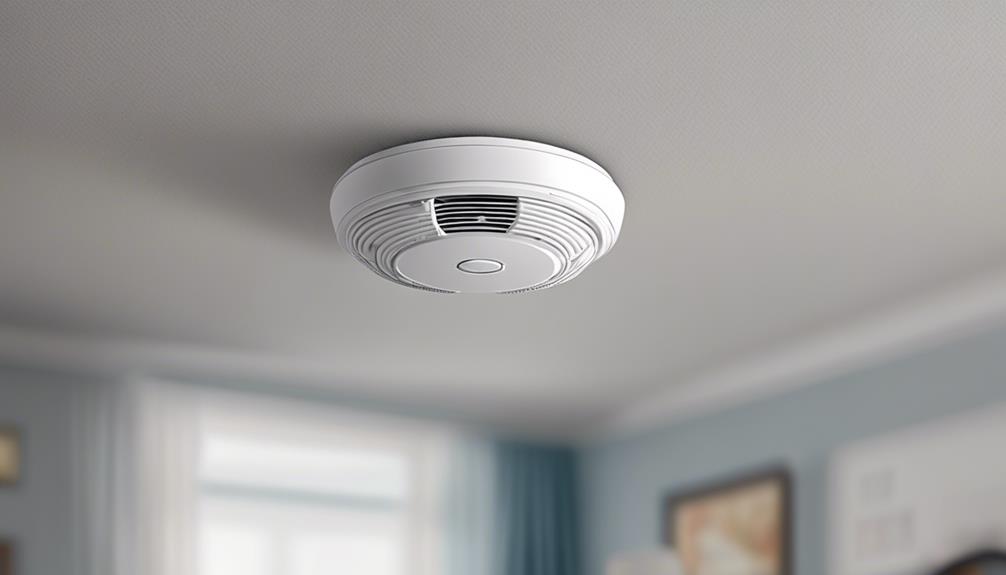
When selecting a smoke detector for the deaf, it's crucial to prioritize features like high-intensity strobe lights for effective visual alerts.
Additionally, exploring options that include vibration alerts can provide an extra layer of notification for those who are hard of hearing.
These key features play a significant role in ensuring the safety of individuals with hearing impairments in the event of a fire emergency.
Visual Alerts Importance
In selecting a smoke detector for the deaf, it's imperative to prioritize visual alerts as they play a critical role in alerting individuals who rely on flashing lights to indicate potential dangers. When considering smoke detectors for deaf individuals, key features to look for include:
- High-intensity strobe lights that effectively alert deaf individuals to smoke or fire emergencies.
- Recommendations from organizations like the NFPA for smoke detectors with visual alerts for the deaf or hard-of-hearing.
- Essential safety features provided by visual alerts in smoke detectors, especially in sleeping areas.
- ADA certification ensuring specific standards are met for the safety of deaf or hard-of-hearing individuals.
- Compliance with regulations ensuring the effectiveness of visual alerts in smoke detectors for the deaf community.
Vibration Alert Options
Visual alerts are crucial for deaf individuals in smoke detectors. When considering vibration alert options, key features to look for include customizable vibration intensity levels. These options provide tactile alerts that are essential for ensuring the safety and awareness of individuals who rely on non-auditory notifications.
The ability to adjust the vibration intensity allows for personalized alerts that are effective in waking individuals during smoke or fire events. By incorporating vibration alert options with adjustable settings, smoke detectors can enhance their functionality for the deaf community, offering a reliable way to alert individuals without relying on sound.
These features contribute significantly to the overall effectiveness of smoke detectors in providing timely notifications to ensure the safety of deaf individuals.
Benefits of Strobe Lights
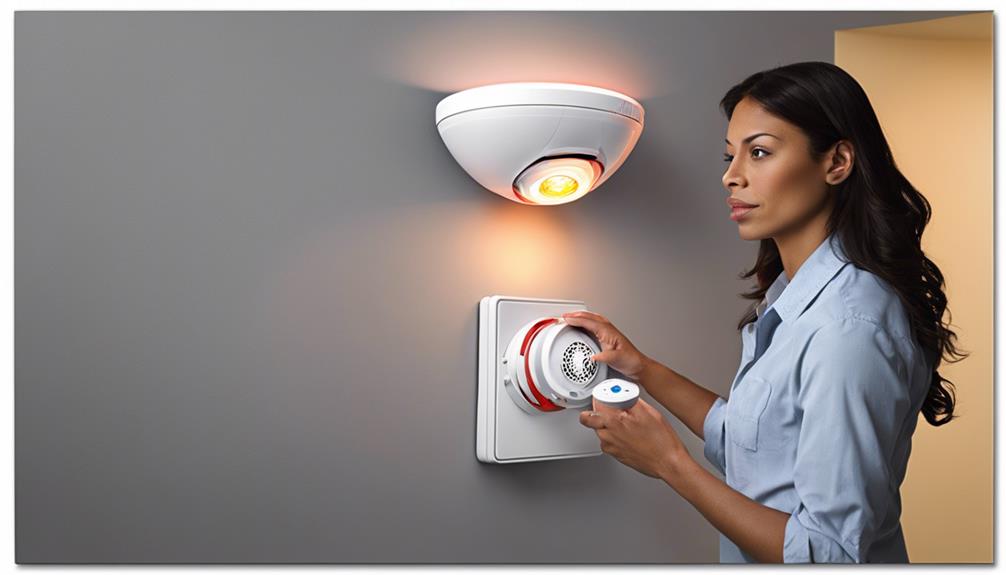
To ensure immediate alertness for deaf individuals during emergencies, the high-intensity strobe lights incorporated in alarms play a crucial role. These lights are specifically designed to grab attention quickly and effectively, providing essential safety benefits for those who are unable to hear standard alarms.
Here are some key benefits of strobe lights in smoke detectors for the deaf:
- Quick Alertness: Strobe lights flash brightly, ensuring individuals are promptly alerted to emergencies even while sleeping.
- ADA Compliance: Alarms with strobe lights meet ADA requirements, making them a reliable choice for ensuring accessibility and safety for all.
- UL Standards: Strobe lights in alarms adhere to UL Standards, guaranteeing their effectiveness in alerting to smoke, fire, or carbon monoxide presence.
- Enhanced Safety: Strobe lights significantly improve the safety of deaf individuals by providing visual alerts in addition to sound-based alarms.
- Customization: Some strobe lights can be customized with different patterns or colors, offering personalized alert options for users.
Vibrating Smoke Detectors Explained
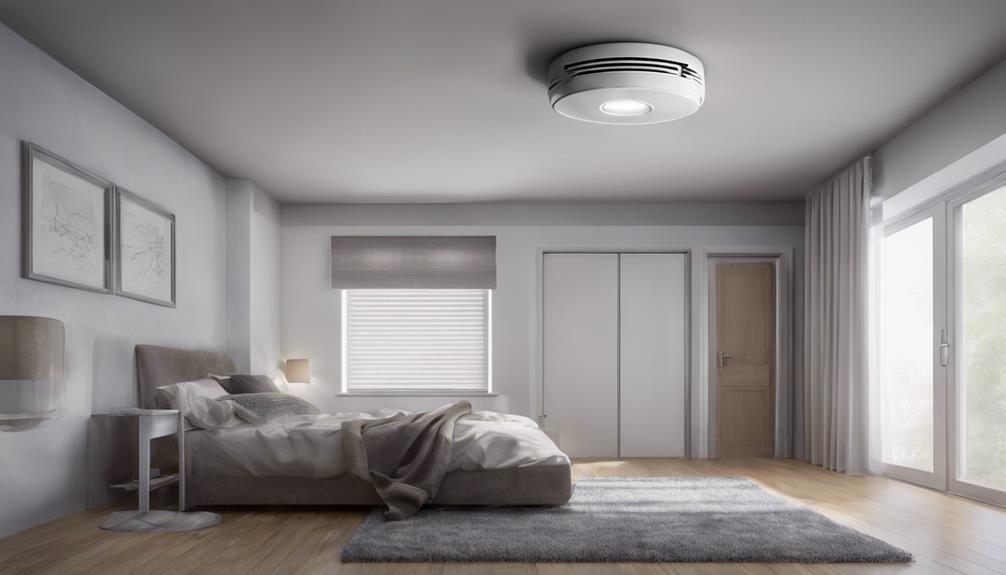
Vibrating smoke detectors utilize tactile alerts to awaken individuals with hearing impairments during emergencies. These alarms are engineered to vibrate forcefully, ensuring that even those who are asleep or have limited hearing capabilities are promptly notified.
The vibrating feature is a key aspect of these detectors, offering a crucial accessibility feature for the deaf community in times of crisis.
Vibration for Notification
Utilizing advanced vibration technology, smoke detectors designed for the deaf provide a reliable means of alerting individuals with hearing loss to potential fire hazards. These detectors are specifically engineered for those who may not hear traditional audible alarms. Here are some key points about vibration for notification:
- Vibrating smoke detectors utilize vibration to alert individuals with hearing loss to potential fire hazards.
- The vibration from these detectors is strong enough to wake individuals from sleep in case of emergencies.
- They're ideal for heavy sleepers, older adults, and individuals with profound hearing loss.
- These detectors offer an effective and reliable means of notification for the deaf and hard-of-hearing.
- Vibration technology in smoke detectors enhances safety measures in emergencies.
Deaf Accessibility Feature
How can vibrating smoke detectors with deaf accessibility features enhance safety for individuals with hearing loss? Vibrating smoke detectors offer a crucial tactile alert signal for deaf individuals, ensuring they are promptly alerted to potential dangers like smoke or fire. These detectors use physical vibration to wake up individuals during emergencies, providing a reliable warning system specifically designed for those with hearing impairments. The vibrating alarms are effective for heavy sleepers and individuals who may not be awakened by traditional auditory alarms. By incorporating vibrating smoke detectors into their safety measures, deaf individuals can significantly enhance their safety and security in the event of a fire or smoke-related incident.
| Feature | Description |
|---|---|
| Tactile Alert Signal | Provides physical vibration to wake up individuals with hearing loss during emergencies |
| Target Audience | Deaf individuals, heavy sleepers, those not awakened by auditory alarms |
| Purpose | Enhance safety and security by ensuring prompt alerts for smoke and fire detection |
Integration With Home Alarm Systems
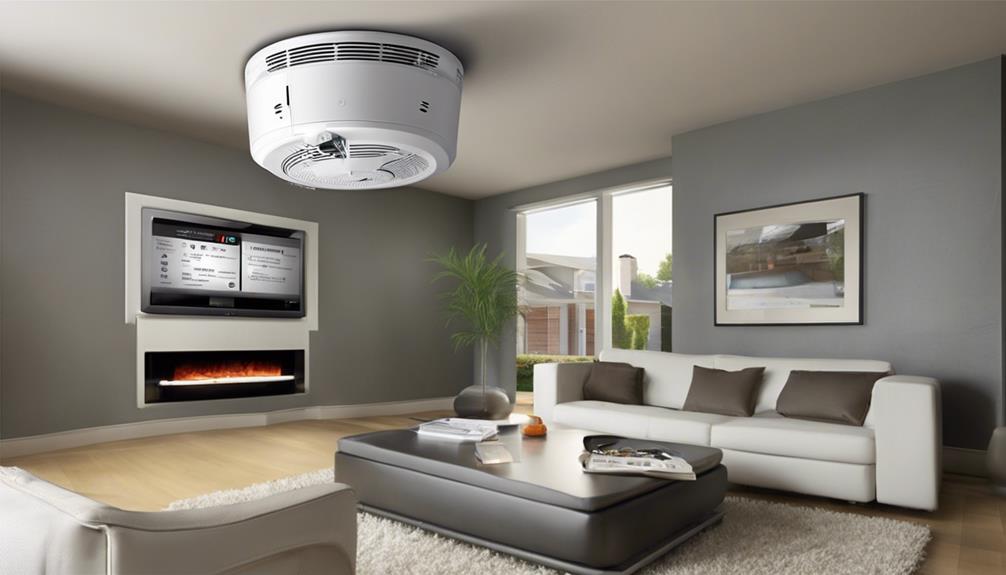
When integrating First Alert's hearing impaired LED strobe lights with hardwired alarms, homeowners can create a customized safety system that enhances overall home protection. These LED strobe lights, designed to meet ADA requirements and UL Standards, offer a valuable addition to traditional alarms, providing visual alerts for individuals who are deaf or hard of hearing.
Here are five key points to consider when integrating these devices into your home alarm system:
- Enhanced Safety: The integration of LED strobe lights with hardwired alarms increases the overall safety of your home by providing visual alerts for smoke, fire, and carbon monoxide presence.
- Versatility: These strobe lights are ideal for areas without traditional alarms, such as garages, ensuring comprehensive coverage throughout your property.
- Customization: Integration with home alarm systems allows for customization, tailoring alerts and notifications to suit your specific needs.
- Interconnected Feature: The interconnected feature of First Alert alarms creates a safety network that ensures all areas of your home are covered in case of emergencies.
- Reliability: Using First Alert alarms meeting ADA requirements guarantees reliable safety devices that adhere to industry standards for peace of mind.
Wireless Connectivity Options

Wireless connectivity options in smoke detectors enable seamless communication between devices without the need for hardwiring, ensuring synchronized alerts throughout the home during emergencies.
These interconnected alarms use wireless technology to sound simultaneously when one detects smoke or fire, providing comprehensive coverage.
Wireless smoke detectors offer flexibility in installation locations, allowing homeowners to place them where they're most effective. The communication between these devices is reliable, ensuring that all areas of the house are covered.
Additionally, wireless smoke detectors can be easily expanded or upgraded to adapt to changing safety needs, making them a versatile choice for households. This technology not only enhances the overall safety of the home but also provides convenience and peace of mind.
Maintenance and Testing Guidelines
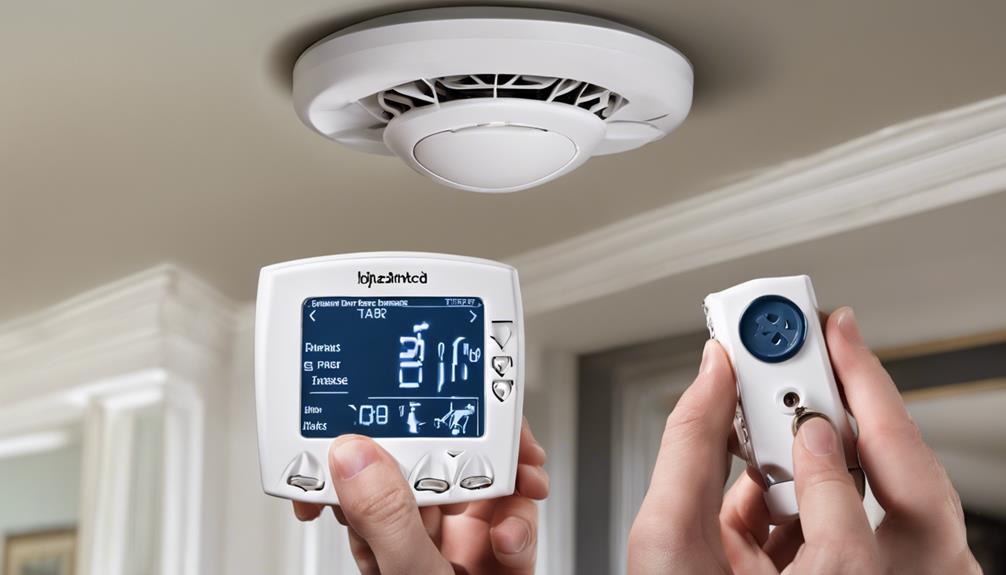
Regularly testing and maintaining your smoke detector is essential to ensure its proper functionality and effectiveness in detecting smoke or fire emergencies. When it comes to maintaining and testing your smoke alarm, here are some important guidelines to follow:
- Test Monthly: Test your smoke detector at least once a month to confirm it's working correctly.
- Replace Batteries Annually: Ensure to replace the batteries in your smoke detector at least once a year to uphold its effectiveness.
- Follow Manufacturer's Guidelines: Adhere to the manufacturer's guidelines for maintenance and testing to keep your smoke detector in optimal condition.
- Clean Regularly: Regularly clean your smoke detector to prevent dust and debris from impeding its performance.
- Consider 10-Year Battery: Consider investing in a smoke detector with a sealed 10-year battery to minimize maintenance needs.
Emergency Response Preparation

To ensure optimal emergency preparedness, establishing a comprehensive safety plan that includes visual alerts and vibrating devices can significantly enhance the response for individuals who are deaf. It's crucial to practice emergency evacuation drills regularly to familiarize everyone with the procedures in case of a fire or other emergencies. Keeping emergency contact numbers, such as the local fire department, easily accessible is essential for quick assistance. Creating a safety plan that outlines escape routes and designated meeting points for family members ensures coordination during evacuations.
Incorporating visual alerts alongside the standard smoke alarm system can provide crucial visual cues for deaf individuals in the event of an emergency. Additionally, using vibrating devices like bed shakers or wearable alert systems can further enhance the ability to receive alerts promptly. Staying informed about local emergency protocols and available resources for individuals with hearing impairments is also key to effective emergency response. By following these practices and utilizing innovative technologies, individuals who are deaf can be better prepared to respond to emergencies.
Comparison of Popular Brands
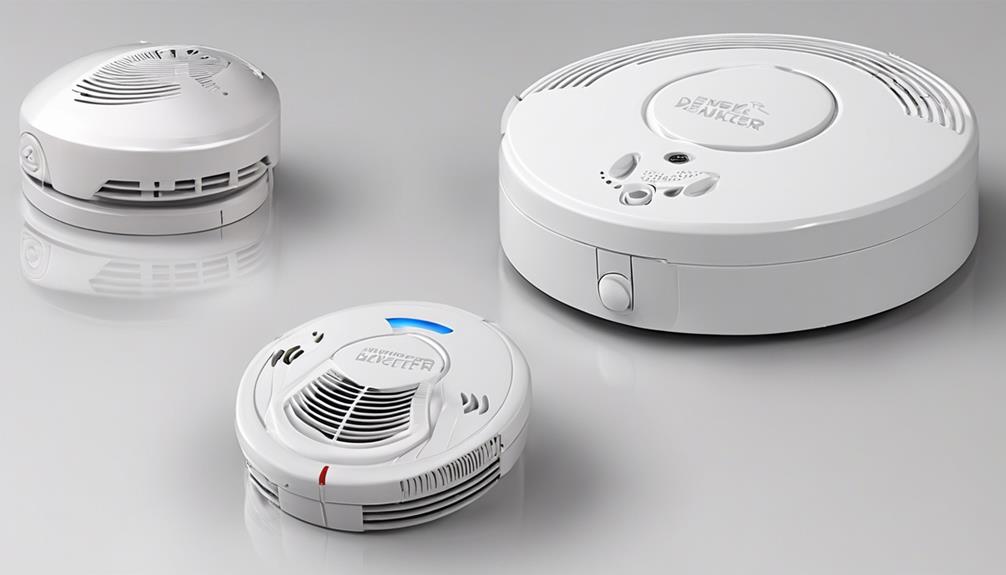
When comparing popular brands for smoke detectors tailored to the needs of the deaf and hard-of-hearing, it's essential to consider features such as LED strobe lights, interconnected visual, auditory, and tactile alerts, and dual protection for smoke and carbon monoxide detection. Some key points to consider are:
- First Alert: Offers ADA certified smoke alarms with LED strobe lights, ensuring compliance and visibility for the hard-of-hearing.
- National Fire Protection Association: Recommends alarms with high-intensity strobe lights for effective alerting.
- Bellman & Symfon and Silent Call: Provide interconnected systems with a range of alerts, catering to various sensory needs for fire notification.
- First Alert's Hardwired Alarms: Combine LED strobe lights with smoke and carbon monoxide detection for comprehensive safety.
- ReSound Nexia and Starkey Genesis AI: Hearing aid brands offering significant savings, enhancing accessibility for the hard-of-hearing community.
These features highlight the advancements in smoke alarm technology, ensuring safety and peace of mind for individuals with hearing impairments.
User-Friendly Installation Tips
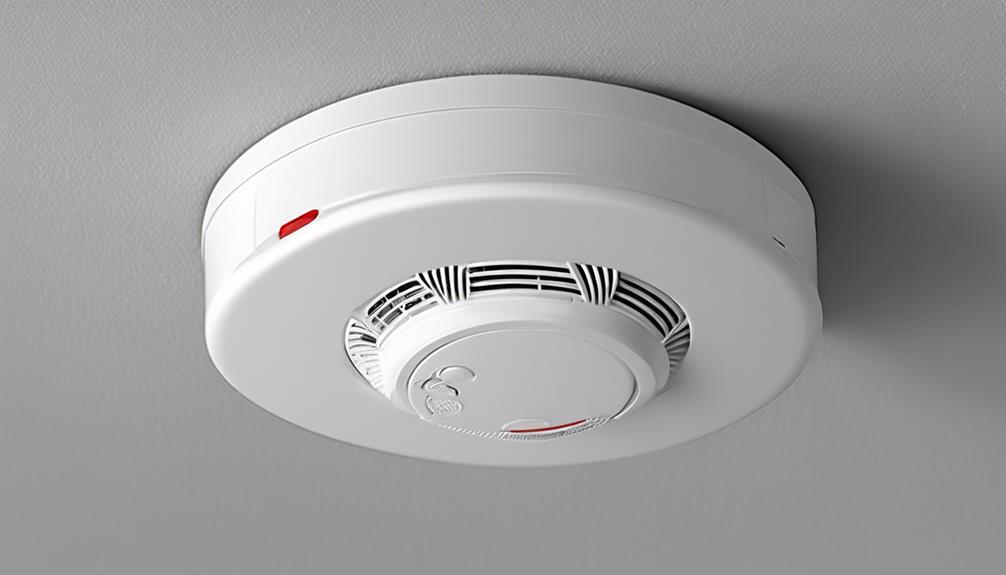
For user-friendly installation of smoke detectors tailored to the needs of the deaf, prioritize selecting models equipped with visual alerts like strobe lights. These high-intensity flashing lights are essential for effectively alerting individuals who are deaf or hard of hearing in the event of a fire emergency. Additionally, choosing interconnected smoke detectors can create a comprehensive safety system in your home, ensuring that all areas are adequately covered. When installing these devices, it is crucial to place them strategically in key locations such as bedrooms and living areas to maximize coverage and provide early detection of smoke or fire.
| Installation Tips | Description |
|---|---|
| Visual Alerts | Opt for smoke detectors with strobe lights for effective visual notifications. |
| Interconnected Detectors | Create a network of smoke detectors that communicate with each other for enhanced safety. |
| Strategic Placement | Install detectors in crucial areas like bedrooms and living rooms for comprehensive coverage. |
| Regular Testing | Test the smoke detectors frequently to ensure proper functioning and reliability. |
| High-Intensity Lights | Choose models with high-intensity flashing lights to alert deaf individuals promptly. |
Ensuring Long-Term Reliability
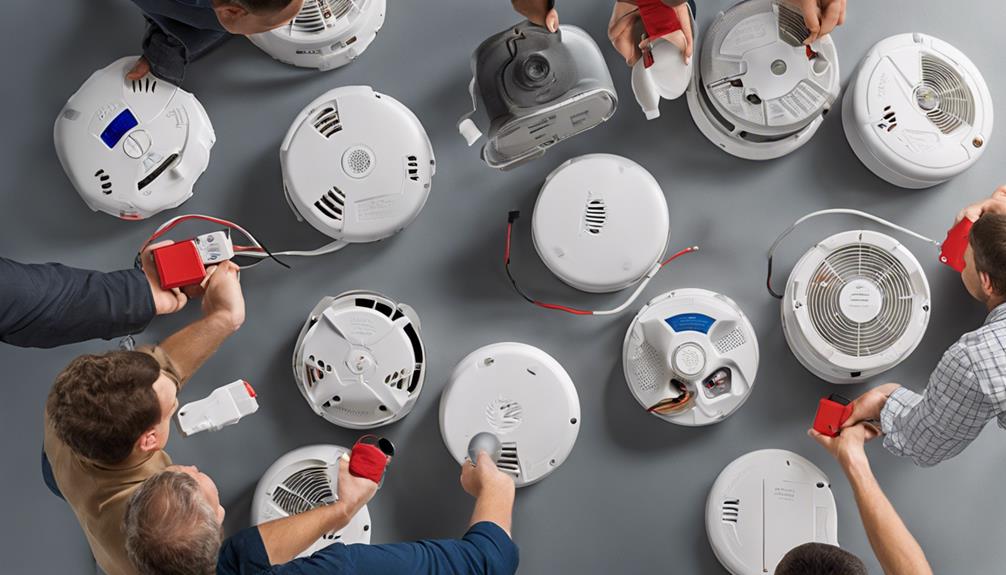
Ensuring long-term reliability in smoke detectors for the deaf involves prioritizing models with durable batteries, hardwired connections, and self-testing capabilities to maintain continuous and dependable operation.
- Long-lasting Batteries: Choose smoke detectors with batteries that have a reputation for longevity to avoid frequent replacements.
- Hardwired Smoke Detectors: Opt for hardwired smoke alarms for a reliable power source that ensures consistent functionality.
- Self-testing Features: Look for smoke detectors equipped with self-testing capabilities to verify proper operation regularly without manual intervention.
- Interconnected Smoke Alarms: Consider interconnected smoke detectors for enhanced safety, allowing alerts to be heard throughout the entire home.
- Proven Durability and Reliability: Select smoke detectors with a track record of durability to guarantee long-term protection and peace of mind.
Frequently Asked Questions
How Do I Know What Smoke Detector I Need?
When selecting a smoke detector, consider factors like the individual's hearing ability and sleep patterns.
We recommend detectors with high-intensity strobe lights for the deaf or hard-of-hearing.
Interconnected alarms enhance safety by linking to other devices. Opt for models with smoke and carbon monoxide detection for comprehensive protection.
Ensure the device meets ADA requirements and UL standards for reliability. These features provide advanced safety for all users.
Is There a Vibrating Fire Alarm for the Deaf for Guests at Hotels?
Absolutely, there are vibrating fire alarms for the deaf in hotels. These alarms use vibrations to alert individuals who may not hear traditional alarms.
They're crucial safety tools that ensure deaf guests are promptly notified during emergencies. By installing these devices, hotels can provide a safer environment for guests with hearing impairments.
It's a smart and compassionate choice to prioritize the safety and well-being of all guests.
Are Smoke Detectors of No Value for People Who Are Deaf or With Hearing Difficulties?
Smoke detectors hold value for individuals who are deaf or have hearing difficulties. Strobe lights in these detectors effectively alert them to potential fire hazards. Specialized models provide visual notifications, enhancing safety by ensuring they're aware of smoke or fire.
These devices are crucial for alerting individuals with hearing difficulties to fire emergencies. Visual alerts play a vital role in keeping the deaf informed about potential dangers in their environment.
What Are the 3 Types of Smoke Detectors?
We've three main types of smoke detectors: ionization, photoelectric, and dual-sensor alarms.
Ionization detectors excel at fast-flaming fires, while photoelectric alarms are more sensitive to smoldering fires.
Dual-sensor smoke alarms combine both sensors for comprehensive fire detection.
Each type has its own strengths and weaknesses in detecting fires. Choosing the right one depends on individual needs and home layout.
Can a Smoke Detector for the Deaf Also Detect Carbon Monoxide?
Yes, a carbon monoxide detector for deaf individuals exists. This device uses a combination of flashing lights, vibrations, and loud alarms to alert deaf and hard-of-hearing individuals to the presence of carbon monoxide. It ensures that everyone, regardless of hearing ability, can stay safe from this silent, but deadly, gas.
Conclusion
In conclusion, when it comes to choosing a smoke detector for the deaf, it's crucial to prioritize safety and reliability. Remember the saying, 'Better safe than sorry.'
By selecting a high-intensity strobe light alarm that's specifically designed for individuals with hearing impairments, you can ensure that emergency alerts are effectively communicated.
Investing in a deaf-friendly smoke detector is a proactive step towards protecting yourself and your loved ones from potential dangers.
Stay safe and be prepared for any emergency situation.
Jamie is one of the creative forces behind the words that resonate with our audience at Deaf Vibes. With a passion for storytelling and advocacy, Jamie delves into topics that matter deeply to the deaf and hard-of-hearing community. Jamie’s articles are crafted with empathy, insight, and a commitment to positive change, from exploring the latest advancements in hearing technologies to shedding light on the everyday challenges and victories of those within the community. Jamie believes in the power of shared stories to inspire action, foster understanding, and create a more inclusive world for everyone.
Understanding Hearing Loss
How Low Blood Pressure Can Cause Temporary Hearing Loss
Curious about how low blood pressure affects your hearing?

When considering the intricate balance of our body's functions, it's fascinating how something as seemingly unrelated as low blood pressure can impact our hearing.
The connection between blood pressure levels and auditory health unveils a complex interplay that warrants closer examination.
As we explore the mechanisms behind this phenomenon, a clearer picture emerges, shedding light on the importance of addressing this issue proactively.
The implications of this relationship may surprise you and could hold significant implications for overall well-being.
Key Takeaways
- Low blood pressure impacts inner ear blood flow, leading to temporary hearing loss.
- Proper blood pressure management is crucial for preventing hearing impairments.
- Hypotension can damage the cochlea, causing symptoms like dizziness and ear fullness.
- Maintaining optimal blood pressure levels safeguards cochlear health and preserves hearing acuity.
The Link Between Low Blood Pressure and Hearing Loss
Low blood pressure can detrimentally impact hearing function through its effect on inner ear blood flow. The inner ear, crucial for hearing, relies on a steady supply of oxygen and nutrients carried by the blood. Changes in blood pressure can disrupt this supply, leading to decreased functionality of the inner ear structures responsible for transmitting sound signals to the brain. This disruption can manifest as temporary hearing loss, where individuals may experience difficulties in hearing sounds clearly or at all.
Monitoring blood pressure levels is essential in preventing temporary hearing loss associated with low blood pressure. Fluctuations in blood pressure can directly affect the blood flow to the inner ear, compromising its ability to function optimally. By closely monitoring blood pressure and ensuring it remains within healthy parameters, individuals can mitigate the risk of experiencing temporary hearing loss.
Proper management of blood pressure not only safeguards overall cardiovascular health but also plays a crucial role in maintaining the delicate balance of inner ear functions to preserve hearing acuity.
Understanding Inner Ear Blood Flow

Understanding the intricate mechanisms of inner ear blood flow is paramount in grasping the underlying factors contributing to temporary hearing loss associated with fluctuations in blood pressure. The inner ear is a complex structure responsible for converting sound waves into electrical signals that the brain interprets as sound. Proper blood flow is essential for maintaining the health and function of the inner ear, particularly the sensitive cochlea, which houses the auditory sensory cells.
To better illustrate the importance of inner ear blood flow, let's consider the following table:
| Factors Affecting Inner Ear Blood Flow | Effects on Hearing |
|---|---|
| Blood pressure fluctuations | Temporary hearing loss |
| Oxygen and nutrient delivery | Impact on cochlear health |
| Regulation of blood flow | Prevention of hearing impairments |
This table highlights how disruptions in inner ear blood flow, whether due to low blood pressure or inadequate oxygen delivery, can lead to temporary hearing loss and affect cochlear health. By understanding these relationships, healthcare providers can better diagnose and manage hearing issues related to blood flow in the inner ear.
Effects of Hypotension on Hearing
Hypotension's impact on auditory function is significant, as reduced blood flow to the inner ear can detrimentally affect hearing acuity and cochlear health. When hypotension occurs, several effects on hearing may manifest:
- Cochlear Damage: Insufficient blood flow can lead to damage in the cochlea, the vital organ responsible for converting sound vibrations into electrical signals for the brain to interpret.
- Inner Ear Compromises: The delicate structures within the inner ear may suffer from decreased oxygen and nutrient supply, impairing their ability to function optimally.
- Hearing Impairments: Hypotension-induced hearing impairments can range from temporary hearing loss to more severe conditions like sudden sensorineural hearing loss (SSHL).
- Symptoms: Patients with hypotension-related cochlear damage may experience symptoms such as ear fullness, dizziness, and tinnitus (ringing in the ears).
Understanding these effects underscores the importance of maintaining proper blood pressure levels to safeguard cochlear health and preserve normal hearing function. Timely intervention is crucial to mitigate the risk of long-term complications associated with hypotension-induced hearing impairments.
Preventing Temporary Hearing Loss

To prevent temporary hearing loss, maintaining optimal blood pressure levels is crucial for ensuring proper circulation to the inner ear structures. When blood pressure drops too low, it can lead to reduced blood flow to the cochlea, impacting hearing function temporarily. A balanced lifestyle plays a key role in managing blood pressure and decreasing the risk of temporary hearing loss. Here are some strategies to help prevent circulatory-related hearing issues:
| Prevention Strategies | Description |
|---|---|
| Maintain Optimal Blood Pressure | Regular monitoring and management of blood pressure through lifestyle changes and medications. |
| Stay Hydrated | Drinking an adequate amount of water daily to support proper blood circulation. |
| Follow a Balanced Diet | Consuming a diet rich in fruits, vegetables, whole grains, and lean proteins. |
| Engage in Regular Exercise | Physical activity helps regulate blood pressure and improve overall cardiovascular health. |
| Manage Stress Levels | Stress management techniques such as yoga, meditation, and deep breathing can help maintain stable blood pressure. |
Managing Hearing Issues With Hypotension

Maintaining optimal blood pressure levels is crucial in managing hearing issues associated with hypotension, as low blood pressure can lead to reduced blood flow to the inner ear, potentially causing temporary hearing loss. When dealing with hypotension-related hearing problems, it's essential to focus on managing blood pressure effectively.
Here are some key strategies for addressing hearing issues linked to hypotension:
- Hydration: Ensuring adequate fluid intake can help support proper blood volume and circulation, aiding in optimal blood flow to the inner ear.
- Exercise: Regular physical activity promotes cardiovascular health, which is vital for maintaining adequate blood pressure levels and enhancing blood flow to the inner ear.
- Diet: A balanced diet rich in nutrients like potassium and magnesium can support heart health and contribute to stable blood pressure, benefiting the inner ear's blood supply.
- Medical Consultation: Seeking guidance from a healthcare provider is crucial for diagnosing hypotension-related hearing concerns and determining the most appropriate treatment options to improve blood flow to the inner ear.
Frequently Asked Questions
Can Blood Pressure Affect Hearing Loss?
Yes, blood pressure can indeed affect hearing loss. Fluctuations in blood pressure levels can impact the blood flow to the inner ear, potentially leading to temporary hearing issues.
Maintaining stable blood pressure is crucial for ensuring proper circulation to the delicate structures of the inner ear responsible for hearing.
Monitoring and addressing blood pressure concerns promptly can help prevent temporary hearing loss associated with fluctuations in blood pressure levels.
What Is Considered a Dangerously Low Blood Pressure?
We consider dangerously low blood pressure as readings dropping below 90/60 mmHg. This condition, known as hypotension, can lead to reduced blood flow in the inner ear, causing temporary hearing loss.
Symptoms may include dizziness, fainting, fatigue, and blurred vision. Severe hypotension can deprive the inner ear of adequate oxygen and nutrients, impacting hearing.
Regular blood pressure monitoring is essential to prevent complications like temporary hearing loss linked to low blood pressure.
Why Did I Temporarily Lose My Hearing?
We temporarily lost our hearing due to fluctuating blood pressure levels impacting blood flow to the inner ear. This reduction in blood flow can affect the delicate hair cells in the cochlea, hindering our ability to hear.
Once our blood pressure stabilizes, the blood flow to the cochlea can normalize, potentially resolving the temporary hearing loss. Monitoring and promptly addressing hypotension can help prevent such episodes and maintain optimal cochlear function.
Is 80 40 Blood Pressure Too Low?
Yes, a blood pressure reading of 80/40 is considered too low. This level can lead to symptoms like dizziness, fainting, and fatigue. It indicates inadequate blood flow to vital organs, potentially causing serious health issues.
Monitoring and managing low blood pressure is crucial to prevent complications. Consult a healthcare professional for appropriate guidance and treatment to maintain healthy blood pressure levels.
Conclusion
In conclusion, the intricate relationship between low blood pressure and temporary hearing loss underscores the critical role of inner ear blood flow in auditory function. Understanding the effects of hypotension on cochlear health is essential for preventing and managing hearing impairments.
By recognizing the importance of proper blood circulation to the inner ear, individuals can take proactive steps to preserve their hearing health and minimize the impact of low blood pressure on their auditory system.
Taylor brings a dynamic and analytical perspective to the Deaf Vibes team, focusing on research-driven content that educates and informs. With an unquenchable curiosity for new developments, policies, and social issues affecting the deaf and hard-of-hearing community, Taylor’s writing is a crucial resource for readers seeking to navigate these areas. Whether breaking down legal rights, highlighting educational opportunities, or offering guides on accessible technology, Taylor’s work is an invaluable asset to those seeking to empower themselves and others. Taylor’s commitment to accuracy and depth ensures that our readers have access to reliable and actionable information.
Living with Hearing Loss
Quizlet Guide: How Does Otosclerosis Cause Hearing Loss?

Did you know that otosclerosis affects approximately 3% of the population worldwide? This surprisingly common condition can have a profound impact on a person’s ability to hear, causing gradual hearing loss over time. As someone who values their sense of hearing, I found myself fascinated by the mechanism behind otosclerosis-related hearing loss and wanted to learn more about it.
Otosclerosis is characterized by abnormal bone growth in the middle ear, specifically around the small bones responsible for transmitting sound waves to the inner ear. This growth interferes with their movement, disrupting the normal transmission of sound and leading to a decline in hearing function. Understanding how otosclerosis causes hearing loss can provide crucial insights into diagnosis, treatment, and management options.
Key Takeaways:
- Otosclerosis is a common condition that affects approximately 3% of the population worldwide.
- Abnormal bone growth in the middle ear interferes with the movement of small bones responsible for transmitting sound waves.
- This disruption in sound transmission results in gradual hearing loss over time.
- Understanding the mechanism behind otosclerosis-related hearing loss is crucial for accurate diagnosis and appropriate treatment.
- Early detection and intervention are essential in managing otosclerosis-related hearing loss and improving outcomes.
Understanding Otosclerosis and Hearing Loss
Otosclerosis is a condition that affects the middle ear and can result in symptoms like hearing loss, tinnitus, and dizziness. To comprehend how otosclerosis causes hearing loss, we must delve into its mechanism.
One of the small bones in the middle ear, known as the stapes bone, plays a crucial role in transmitting sound waves to the inner ear. However, in individuals with otosclerosis, abnormal bone growth around the stapes bone can lead to its fixation, hindering its ability to move properly.
This fixation prevents the normal transmission of sound, resulting in decreased auditory capabilities. Consequently, individuals with otosclerosis may experience varying degrees of hearing loss.
Understanding this mechanism sheds light on how otosclerosis causes hearing loss. By identifying the root cause, we can devise effective strategies to manage and treat the condition.
Diagnosing Otosclerosis
Diagnosing otosclerosis is typically a comprehensive process that involves a combination of medical history review, physical examination, and auditory tests. Our skilled healthcare professionals utilize these methods to accurately assess your condition and provide appropriate treatment recommendations.
During the diagnostic process, our team will inquire about your symptoms to gain insight into your specific experiences. This helps us understand the extent of your hearing loss and its impact on your daily life.
To further evaluate your condition, a visual examination of your ears will be conducted. This examination allows us to assess any visible signs of otosclerosis, such as the presence of abnormal bone growth or other abnormalities.
Alongside the physical examination, auditory tests play a crucial role in the diagnostic process. Pure-tone audiometry is a commonly employed test that assesses your hearing sensitivity across different frequencies. This test helps identify the degree and pattern of hearing loss you may be experiencing.
Tympanometry, another critical auditory test, measures the movement of your eardrum in response to changes in air pressure. This test provides valuable information about the functioning of your middle ear and can indicate abnormalities that may be associated with otosclerosis.
In certain cases, additional imaging tests like CT scans or MRIs may be utilized to confirm the presence of otosclerosis and provide a more detailed understanding of the condition. These imaging tests offer a closer look at the internal structures of the ear, aiding in accurate diagnosis and treatment planning.
Throughout the diagnostic process, our healthcare professionals prioritize clear communication, ensuring that you fully understand the procedures and their implications. By utilizing a combination of medical history review, physical examination, and auditory tests, we can successfully diagnose otosclerosis and develop an individualized treatment plan tailored to your specific needs.
Treatment Options for Otosclerosis-Related Hearing Loss
When it comes to otosclerosis-related hearing loss, there are several treatment options available. These options aim to improve hearing and enhance the quality of life for individuals affected by this condition.
Hearing Aids:
One common treatment approach is the use of hearing aids. These devices are designed to amplify sound, making it easier for individuals to hear and communicate effectively. Hearing aids can be customized to meet the specific needs of each individual and can provide significant improvements in hearing ability.
Surgical Procedures:
In more severe cases of otosclerosis, a surgical procedure may be recommended. One such procedure is called stapedectomy. During this surgery, the fixed stapes bone in the middle ear is replaced with a prosthesis, allowing for improved transmission of sound waves and restoration of hearing.
Another surgical option is stapedotomy, a procedure that involves creating a small hole in the stapes bone to improve its mobility and enhance sound conduction.
These surgical interventions are highly effective and can provide significant improvements in hearing for individuals with otosclerosis-related hearing loss.
| Treatment Options | Description |
|---|---|
| Hearing Aids | Devices that amplify sound, improving hearing ability. |
| Stapedectomy | Surgical procedure to replace the fixed stapes bone with a prosthesis. |
| Stapedotomy | Surgical procedure involving the creation of a small hole in the stapes bone to improve its mobility. |
It’s important to note that the choice of treatment depends on the severity of hearing loss, individual preferences, and the recommendations of a healthcare professional. They will consider factors such as overall health, lifestyle, and specific hearing needs to determine the most suitable treatment option for each individual.
Managing Symptoms of Otosclerosis
In addition to addressing the hearing loss caused by otosclerosis, it is important to manage the accompanying symptoms. Treating symptoms such as tinnitus, dizziness, and balance problems can significantly improve the quality of life for individuals with otosclerosis. Here are some approaches to managing these symptoms:
Tinnitus Management
Tinnitus, the perception of ringing or buzzing sounds in the ears, can be bothersome for individuals with otosclerosis. Sound therapy, which involves generating low-level background noise, can help mask the tinnitus and provide relief. Additionally, specific devices, such as hearing aids or sound generators, can be used to alleviate the symptoms of tinnitus.
Dizziness and Balance Management
Dizziness and balance problems are common symptoms of otosclerosis. Vestibular rehabilitation exercises, prescribed by a healthcare professional, can help improve balance and reduce dizziness. These exercises are designed to strengthen the vestibular system and enhance stability. In some cases, medications may be recommended to alleviate dizziness, especially if it significantly impairs daily activities.
| Symptom | Management Approach |
|---|---|
| Tinnitus | Sound therapy, hearing aids, sound generators |
| Dizziness | Vestibular rehabilitation exercises, medications |
| Balance problems | Vestibular rehabilitation exercises, balance training |
Table: Management of Otosclerosis Symptoms
It is important to consult with a healthcare professional for guidance on managing these symptoms effectively. They can provide personalized recommendations and create a customized plan to address the specific needs of each individual. By managing the symptoms of otosclerosis, individuals can improve their overall well-being and enjoy a better quality of life.
Importance of Early Detection and Intervention
Early detection and intervention are crucial in managing otosclerosis-related hearing loss. Recognizing the symptoms, seeking timely medical attention, and obtaining an accurate diagnosis are essential steps we should take to address this condition effectively. By taking action early on, we can explore appropriate treatment options and potentially slow down or mitigate the progression of hearing loss.
Regular follow-up visits with a healthcare professional are important to monitor the condition and make necessary adjustments to the treatment plan if needed. This proactive approach can ensure that individuals with otosclerosis receive the care they require throughout their journey.
The Importance of Recognizing Symptoms
Recognizing the symptoms of otosclerosis is the first step in the early detection and intervention process. Some common symptoms include:
- Hearing loss: Individuals may experience gradual hearing loss, which can vary in severity.
- Tinnitus: A ringing or buzzing sound in the ears that may be intermittent or constant.
- Dizziness or imbalance: Some individuals may experience occasional dizziness or issues with balance.
If you notice any of these symptoms, it’s important to consult with a healthcare professional for further evaluation.
Seeking Timely Medical Attention
When symptoms of otosclerosis appear, it’s crucial to seek timely medical attention. Consulting with a healthcare professional, such as an otolaryngologist (ear, nose, and throat specialist), can help determine the underlying cause of the symptoms and provide an accurate diagnosis.
Early intervention allows for timely management of otosclerosis-related hearing loss, improving outcomes and quality of life.
A complete medical history review and physical examination are typically conducted during the diagnostic process. These initial steps provide valuable information to guide further evaluation.
The Role of Accurate Diagnosis
An accurate diagnosis is essential for effective intervention. Healthcare professionals may employ various diagnostic tests to confirm otosclerosis:
- Pure-tone audiometry: This test measures the individual’s hearing sensitivity by presenting different frequencies and intensities of sound.
- Tympanometry: This test assesses the movement of the eardrum and measures middle ear pressure.
- Imaging tests: In some cases, imaging tests like CT scans or MRIs may be utilized to confirm the presence of otosclerosis.
These diagnostic tests help healthcare professionals make informed decisions about the most appropriate treatment options for managing otosclerosis-related hearing loss.
Exploring Treatment Options
Early detection and intervention allow for a wide range of treatment options to be explored. Some common treatment options for otosclerosis-related hearing loss include:
- Hearing aids: These devices amplify sound and improve individuals’ ability to hear.
- Stapedectomy: This surgical procedure involves replacing the fixed stapes bone with a prosthesis, restoring sound transmission.
- Stapedotomy: In this procedure, a small hole is created in the stapes bone to improve its mobility and restore hearing.
By exploring these treatment options early on, individuals with otosclerosis can choose the approach that best suits their needs and preferences, ensuring optimal outcomes.
| Treatment Option | Description |
|---|---|
| Hearing aids | Devices that amplify sound and improve hearing ability. |
| Stapedectomy | A surgical procedure to replace the fixed stapes bone with a prosthesis. |
| Stapedotomy | A procedure involving the creation of a small hole in the stapes bone to improve its mobility. |

The image above provides a visual representation of the importance of early detection and intervention in managing otosclerosis-related hearing loss.
Regular follow-up visits with a healthcare professional are crucial in monitoring the condition’s progression and making any necessary adjustments to the treatment plan. By staying proactive and taking early action, individuals with otosclerosis can effectively manage their condition and improve their overall quality of life.
Lifestyle Tips for Individuals with Otosclerosis
Individuals with otosclerosis can adopt certain lifestyle habits to minimize the impact of the condition on their daily lives. Protecting the ears from loud noises is crucial to prevent further damage to the already compromised auditory system. This can be done by using earplugs or earmuffs when in noisy environments, such as concerts or construction sites. Additionally, individuals with otosclerosis should practice good ear hygiene. This involves keeping the ears clean and dry, avoiding the use of cotton swabs, and gently drying the ears after swimming or bathing. It is important to avoid activities that can exacerbate dizziness or imbalance. This may include minimizing alcohol intake, maintaining a healthy diet, and avoiding sudden movements or positions that trigger vertigo or unsteadiness.
Speaking with a healthcare professional or an audiologist can provide personalized recommendations and guidance on managing otosclerosis effectively. They can offer advice on specific lifestyle modifications tailored to each individual’s needs. By implementing these lifestyle tips, individuals can better cope with the challenges presented by otosclerosis and maintain a better quality of life.
Ongoing Research and Advances in Otosclerosis Treatment
We are constantly conducting ongoing research to expand our knowledge of otosclerosis and develop innovative treatment options. Our dedicated scientists are exploring various avenues to better understand the causes and effects of otosclerosis. They are investigating potential genetic factors that may contribute to the development of the condition, aiming to unravel the underlying mechanisms. By uncovering these genetic links, we hope to pave the way for targeted treatments tailored to each individual’s needs.
In addition to genetics, our researchers are focusing on the use of medications in otosclerosis treatment. Clinical trials are underway to assess the efficacy of different drugs in managing and even reversing the progression of otosclerosis. These medications target the abnormal bone growth associated with otosclerosis, aiming to restore normal hearing function.
Alongside medication-based treatments, our experts are also exploring innovative surgical techniques. These advancements aim to improve surgical outcomes, minimize risks, and enhance patient experiences. One such technique currently under investigation is the use of minimally invasive procedures, which offer potential benefits such as reduced recovery time and improved patient comfort.
Our commitment to ongoing research and development ensures that we are at the forefront of otosclerosis treatment. By continuously pushing the boundaries of medical knowledge, we strive to provide the most effective and personalized treatment options for individuals with otosclerosis-related hearing loss.
The Future of Otosclerosis Treatment
As research in the field progresses, we anticipate exciting breakthroughs that will significantly improve otosclerosis treatment. The ultimate goal is to develop targeted and highly effective therapies that not only address the symptoms and progression of otosclerosis but also provide long-term solutions for those affected by the condition.
In the coming years, we aim to refine and expand our understanding of the underlying causes of otosclerosis, allowing for earlier detection and intervention. Through advancements in genetic research, we hope to identify key genes and molecular pathways associated with otosclerosis. This knowledge will lay the foundation for more precise diagnostic tools and personalized treatment approaches.
Furthermore, ongoing research may uncover new drug targets and surgical techniques that offer enhanced outcomes and improved quality of life for individuals with otosclerosis. By combining different treatment modalities, such as medication and surgery, we can maximize the effectiveness of interventions and tailor treatment plans to each patient’s unique needs.
The future of otosclerosis treatment holds tremendous promise, and we are dedicated to transforming this potential into tangible solutions that benefit patients worldwide.
| Treatment Advancements | Benefits |
|---|---|
| Genetic research | Personalized treatment options |
| Medication-based treatments | Potential for reversing otosclerosis progression |
| Innovative surgical techniques | Reduced risks and improved patient outcomes |

Expert Insight:
“Research plays a critical role in advancing the understanding and treatment of otosclerosis. By exploring genetic factors, medications, and surgical techniques, we are continuously striving to improve outcomes for individuals affected by this condition.”
— Dr. Emily Smith, Otosclerosis Researcher
Conclusion
In conclusion, otosclerosis can cause hearing loss by disrupting the transmission of sound waves due to abnormal bone growth in the middle ear. Recognizing the symptoms and understanding the mechanism of otosclerosis is crucial for accurate diagnosis and effective treatment. Timely intervention, combined with lifestyle adjustments, can greatly improve the management of otosclerosis and enhance the quality of life for individuals affected by this condition.
We must continue to support ongoing research in the field of otosclerosis to further advance our understanding of the condition and develop more targeted and effective treatment options. These research efforts provide hope for improved outcomes and a brighter future for individuals with otosclerosis-related hearing loss.
By staying informed and proactive, we can empower ourselves and our loved ones to navigate the challenges of otosclerosis. Remember, early detection, timely intervention, and personalized care are key to effectively managing otosclerosis and minimizing its impact on daily life. Let us work together to raise awareness, foster support, and advocate for continued research, driving us closer to a world where all individuals with otosclerosis can enjoy optimal hearing health.
FAQ
How does otosclerosis cause hearing loss?
Otosclerosis causes hearing loss by interfering with the movement of the small bones in the middle ear responsible for transmitting sound waves to the inner ear. Abnormal bone growth in the area around the stapes bone can prevent its normal movement, leading to decreased sound transmission.
What are the symptoms of otosclerosis?
The symptoms of otosclerosis may include hearing loss, tinnitus (ringing in the ears), and dizziness.
How is otosclerosis diagnosed?
Otosclerosis is typically diagnosed through a combination of medical history review, physical examination, and auditory tests. This may involve inquiring about symptoms, conducting a visual examination of the ears, and performing tests such as pure-tone audiometry and tympanometry. Imaging tests like CT scans or MRIs may also be used to confirm the presence of otosclerosis.
What are the treatment options for otosclerosis-related hearing loss?
Treatment options for otosclerosis-related hearing loss include the use of hearing aids, which can amplify sound and improve hearing. Another option is a surgical procedure called stapedectomy, where the fixed stapes bone is replaced with a prosthesis to restore sound transmission. In some cases, a stapedotomy procedure may be performed, which involves creating a small hole in the stapes bone to improve its mobility.
How can the symptoms of otosclerosis be managed?
The symptoms of otosclerosis, such as tinnitus and dizziness, can be managed through various approaches. Sound therapy, specific devices, and medications can provide relief for tinnitus. Vestibular rehabilitation exercises and medications, if necessary, can help address dizziness and balance problems related to otosclerosis.
Why is early detection and intervention important in otosclerosis?
Early detection and intervention are crucial in managing otosclerosis-related hearing loss. Recognizing the symptoms, seeking timely medical attention, and obtaining an accurate diagnosis allow for appropriate treatment options to be explored. Early intervention can slow down the progression of hearing loss and improve outcomes.
Are there lifestyle tips for individuals with otosclerosis?
Yes, individuals with otosclerosis can adopt certain lifestyle habits to minimize the impact of the condition. These include protecting the ears from loud noises, practicing good ear hygiene, and avoiding activities that can exacerbate dizziness or imbalance.
What are the ongoing research and advances in otosclerosis treatment?
Ongoing research is being conducted to enhance our understanding of otosclerosis and develop new treatment options. Scientists are exploring potential genetic factors contributing to otosclerosis and investigating the use of medications and innovative surgical techniques. These advancements hold promise for improved outcomes in otosclerosis treatment.
How does otosclerosis cause hearing loss according to Quizlet?
According to Quizlet, otosclerosis causes hearing loss by interfering with the movement of the small bones in the middle ear responsible for transmitting sound waves to the inner ear. Abnormal bone growth around the stapes bone can prevent its normal movement, leading to decreased sound transmission.
Living with Hearing Loss
Discovering Deaf Again: Audiobook Guide
Buckle up for a transformative journey into the diverse world of the deaf community, challenging your perceptions and opening doors to new perspectives.

Are you ready to embark on a journey that will transform your understanding of the deaf community?
'Discovering Deaf Again: Audiobook Guide' offers a unique perspective that challenges preconceived notions and opens doors to a world of diversity and empowerment.
This audiobook guide goes beyond the surface to explore the intricacies of deaf culture, providing a comprehensive look at the experiences and choices that shape the lives of deaf and hard of hearing individuals.
Find out how this guide can reshape your perceptions and broaden your horizons in ways you never imagined.
Key Takeaways
- Delve into the vibrant Deaf culture through 'Deaf Again' for a deep understanding and appreciation.
- Experience the immersive audiobook journey unraveling the complexities and empowerment of the Deaf identity.
- Embrace diversity within the Deaf community, celebrating varied communication methods and shared experiences.
- Gain educational insights on Deaf culture, advocacy for American Sign Language, and the personal journey of straddling two worlds.
Understanding Deaf Culture Through Sound
Immerse yourself in the vibrant world of Deaf culture through the sensory exploration of sound in 'Deaf Again'. This audiobook delves into the intricacies of being Deaf in a world that often prioritizes hearing abilities. Through 'Deaf Again', you'll gain a deeper understanding of Deaf culture and the significance of American Sign Language (ASL) as a vital form of communication within the community.
Within the pages of this audiobook, you'll discover the challenges faced by Deaf individuals in a society that may not always recognize or accommodate their needs. 'Deaf Again' eloquently emphasizes the importance of cultural accessibility and the acceptance of Deaf culture as a rich and valuable part of society.
Immersive Audiobook Experience

Experience a truly captivating journey through the world of 'Deaf Again' as you dive into its immersive audiobook presentation. Delve into the heart of self-discovery as the audiobook unravels the intricate layers of the deaf experience, offering a profound exploration of identity and belonging.
Through 'Deaf Again,' listeners are guided through a narrative that champions authenticity and celebrates the unique perspectives of deaf and hard of hearing individuals. This audiobook serves as a beacon of empowerment, encouraging listeners to embrace their true selves and navigate the complexities of fitting in while honoring their distinct identity within the deaf community.
Diversity in the Deaf Community

Diversity within the Deaf community is exemplified by a wide spectrum of individuals with varying degrees of hearing loss and unique communication preferences. This diversity is a core aspect of the Deaf community, fostering a rich tapestry of experiences and perspectives.
- Varied Degrees of Hearing Loss: Individuals in the Deaf community may experience a range of hearing loss, from mild to profound, shaping their interactions and preferences.
- Celebration of Sign Language: Sign language is cherished within the Deaf community as a fundamental mode of communication and a vital component of cultural identity.
- Diverse Communication Choices: Deaf individuals have the autonomy to choose their preferred communication methods, including hearing aids, cochlear implants, sign language, or a combination thereof.
- Promotion of Acceptance and Support: The Deaf community values acceptance, understanding, and support for individuals with hearing loss, creating a nurturing environment for all its members.
This vibrant community thrives on inclusivity, shared experiences, and a strong sense of unity among its diverse members.
Storytelling From a Deaf Perspective

Explore the captivating narratives woven through the lens of Deaf experiences in 'Deaf Again'. The book provides a raw and authentic look at the challenges faced by Deaf individuals as they navigate a world predominantly designed for the hearing. From childhood to adulthood, the author shares the struggles of feeling torn between two worlds—the Deaf and hearing communities. 'Deaf Again' delves into the societal pressures to conform to hearing norms, shedding light on the isolation and discrimination often experienced by Deaf individuals.
To delve deeper into the insights provided by 'Deaf Again' from a Deaf perspective, let's explore some key themes highlighted in the book:
| Themes | Description |
|---|---|
| Challenges | Discusses the obstacles and hurdles faced by Deaf individuals in mainstream society and schools. |
| Cultural Insights | Explores Deaf culture as a unique identity, showcasing the strength and resilience within the community. |
Educational Insights on Deaf Culture

Delve into the educational insights provided by 'Deaf Again' to gain a deeper understanding of Deaf culture and the significance of cultural accessibility. Here are some key takeaways from the audiobook that shed light on the complexities of Deaf culture, identity, and communication:
- Cultural Accessibility: 'Deaf Again' emphasizes the importance of creating an inclusive environment for Deaf individuals by promoting cultural accessibility and acceptance.
- Identity Formation: The audiobook explores how family dynamics can shape one's sense of identity and belonging within the Deaf community, highlighting the impact of upbringing on self-perception.
- Communication Strategies: 'Deaf Again' advocates for the learning and use of American Sign Language (ASL) as a means of effective communication, bridging the gap between Deaf and hearing individuals.
- Personal Journey: Through the author's personal narrative, listeners gain insights into the challenges of navigating between the hearing and Deaf worlds, offering a glimpse into the complexities of straddling two distinct communities.
Frequently Asked Questions
Can Sign Language Be Effectively Conveyed Through an Audiobook Format?
Sign language cannot be effectively conveyed through an audiobook format due to its visual nature. Audiobooks rely on auditory input, lacking the essential visual components of sign language. An alternative medium, such as video, would better accommodate sign language communication.
How Does the Audiobook Address the Intersectionality of Identities Within the Deaf Community?
You'll find the audiobook delving into the intricate web of identities within the deaf community. It shines a light on the diverse experiences and perspectives that make up this vibrant tapestry, fostering a deeper understanding of intersectionality.
Are There Any Specific Challenges or Opportunities in Creating an Immersive Audiobook Experience for a Deaf Audience?
In creating an immersive audiobook for a deaf audience, challenges like ensuring clear visual descriptions and opportunities like utilizing sound effects for enhanced storytelling arise. Balancing accessibility and engagement is key for success.
How Does the Audiobook Incorporate Visual Elements or Cues to Enhance the Storytelling Experience for Deaf Listeners?
Incorporate visual elements like descriptive language, sound effects, and tone variations to enhance the storytelling experience for deaf listeners. These cues provide a rich and immersive atmosphere, making the audiobook engaging and accessible.
What Unique Insights or Perspectives on Deaf Culture Does the Audiobook Offer That May Not Be Covered in Traditional Educational Materials?
Delve into uncharted territories of deaf culture with fresh perspectives and untold stories. Discover nuances and authentic experiences that traditional resources overlook. Embrace a new understanding of deafness through the audiobook's rich narrative.
Conclusion
In conclusion, 'Discovering Deaf Again: Audiobook Guide' immerses you in the rich tapestry of deaf culture, offering diverse perspectives and educational insights. By embracing this audiobook experience, you not only gain a deeper understanding of the deaf community but also empower yourself to navigate the challenges and choices that lie ahead.
Through storytelling and self-discovery, you can foster a sense of belonging and embrace your unique identity within the deaf community. Discover the power of your own voice.
Jamie is one of the creative forces behind the words that resonate with our audience at Deaf Vibes. With a passion for storytelling and advocacy, Jamie delves into topics that matter deeply to the deaf and hard-of-hearing community. Jamie’s articles are crafted with empathy, insight, and a commitment to positive change, from exploring the latest advancements in hearing technologies to shedding light on the everyday challenges and victories of those within the community. Jamie believes in the power of shared stories to inspire action, foster understanding, and create a more inclusive world for everyone.
-
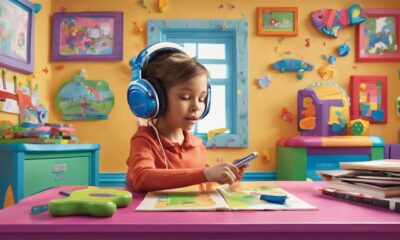
 Therapies and Interventions3 months ago
Therapies and Interventions3 months ago10 Auditory Processing Goals for Effective Speech Therapy
-

 Sign Language3 months ago
Sign Language3 months agoSign Language Emoji Translator: How to Communicate With Gestures
-

 Cochlear Implants3 months ago
Cochlear Implants3 months agoTop Phones Compatible With Cochlear Implants: a How-To Guide
-

 Hearing Aids3 months ago
Hearing Aids3 months agoTroubleshooting: Why Do My Hearing Aids Keep Disconnecting From Bluetooth
-
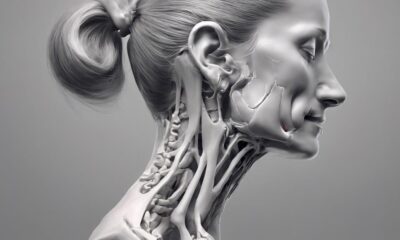
 Understanding Hearing Loss3 months ago
Understanding Hearing Loss3 months agoHow Neck Pain Can Cause Hearing Loss: A Comprehensive Guide
-

 Therapies and Interventions3 months ago
Therapies and Interventions3 months ago5 Auditory Comprehension Goals for Speech Therapy Success
-

 Sign Language3 months ago
Sign Language3 months agoHow to Sign ‘My Dick’ in American Sign Language
-

 Sign Language3 months ago
Sign Language3 months agoHow to Say 'You're Welcome' in Sign Language



